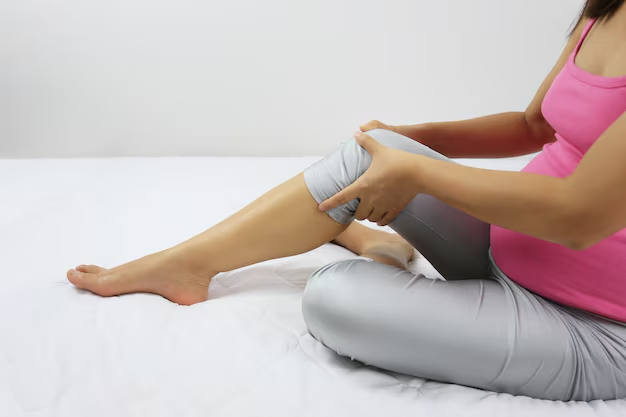Navigating the Impact of Diabetes on Leg Health: Essential Insights and Strategies
Living with diabetes can sometimes feel like navigating a maze, especially when it affects different parts of your body, notably your legs. This article delves into the ways diabetes can impact leg health, addressing common concerns and offering guidance on how to manage these issues effectively. Whether you're living with diabetes or supporting someone who is, understanding how diabetes can affect the legs is a critical step in preventing complications and promoting overall well-being.
Understanding Diabetic Neuropathy and Its Effects on the Legs
What is Diabetic Neuropathy?
Diabetic neuropathy is one of the most common complications of diabetes. It arises from prolonged high blood sugar levels damaging the nerves throughout the body, and it frequently affects the legs and feet. This condition may result in symptoms like tingling, numbness, and pain, which can significantly impact a person's quality of life.
Impact on Mobility and Daily Activities
The nerve damage associated with diabetic neuropathy can lead to a loss of sensation in the legs and feet. This loss of sensation increases the risk of injuries and infections, as individuals may not feel the pain of cuts, sores, or blisters. Over time, limited mobility and pain may make walking difficult, affecting daily activities and independence.
Circulation Issues: How Diabetes Affects Blood Flow
Peripheral Artery Disease and Its Implications
Peripheral artery disease (PAD) is another concern for those with diabetes. It occurs when fatty deposits narrow the blood vessels, reducing blood flow to the extremities. PAD can lead to claudication, which is characterized by pain or cramping in the legs during physical activities due to inadequate blood supply.
Signs and Symptoms to Watch
Symptoms of poor circulation in the legs can include cold feet, weak pulse, slow wound healing, and discoloration of the skin. Recognizing these signs early can be pivotal in managing and mitigating further complications.
Proactive Management: Strategies for Maintaining Leg Health
Regular Monitoring and Foot Care
Consistent monitoring and care are essential for preventing severe complications such as foot ulcers or infections. Here are practical steps to incorporate into a daily routine:
- Daily Inspection: Look for any cuts, swelling, or changes in color.
- Proper Footwear: Wear supportive and well-fitting shoes to avoid pressure points and blisters.
- Moisturize: Keep skin hydrated to prevent cracking, but avoid applying lotion between the toes.
Exercising Safely
Despite the challenges, staying active is crucial for maintaining circulation and managing blood sugar levels. Here’s how to incorporate exercise safely:
- Gentle Exercises: Activities like walking, swimming, or cycling can boost circulation without overstraining.
- Regular Breaks: Avoid long periods of inactivity. Stand up and stretch regularly throughout the day.
- Consultation: Discuss with healthcare professionals to tailor exercises to individual capabilities.
Practical Diet Choices for Supporting Leg Health
Balancing Nutrient Intake
A balanced diet can play a pivotal role in managing diabetes and maintaining leg health. Focus on:
- Whole Grains: Opt for options like oats and brown rice, which have a low glycemic index.
- Healthy Fats: Incorporate sources such as avocados, nuts, and olive oil.
- Lean Proteins: Include fish, chicken, and legumes to aid muscle and nerve function.
Hydration's Role
Staying hydrated supports overall health, including circulation. Aim for adequate water intake throughout the day, and minimize sugary drinks to control blood sugar levels.
When to Seek Professional Guidance
Recognizing Red Flags
Noticing changes early and seeking professional assistance can prevent the progression of complications. Visit a healthcare provider if you experience:
- Persistent or worsening pain in the legs
- Non-healing sores or ulcers
- Swelling, redness, or signs of infection
Preparing for Healthcare Visits
When preparing for a doctor’s appointment, consider bringing the following:
- A list of symptoms experienced
- Questions or concerns regarding leg health
- Information on current medications and diet
Key Takeaways for Managing Leg Health in Diabetes
- Monitor Regularly: Keep track of any changes in the legs and feet to catch issues early.
- Stay Active: Incorporate gentle exercises to promote circulation and overall health.
- Choose Nourishing Foods: Prioritize a balanced diet to support blood sugar management and nerve health.
🌟 Quick Summary: Essential Tips for Diabetes and Leg Health
- 👀 Inspect Daily: Check your feet for any changes to prevent complications.
- 👟 Wear Proper Footwear: Choose shoes that offer support and protect against injuries.
- 🏃♂️ Stay Active: Engage in mild, regular exercise to enhance circulation.
- 🥦 Maintain a Balanced Diet: Focus on whole grains, lean proteins, and healthy fats.
- 🚰 Stay Hydrated: Drink water to aid in circulation and overall health.
- 📞 Reach Out Early: If any issues arise, contact a healthcare professional promptly.
Conclusion: Empowering Your Health Journey
Understanding the connection between diabetes and leg health is crucial for taking proactive steps towards better management and prevention of complications. By staying informed and collaborating with healthcare professionals, individuals can maintain mobility, enhance quality of life, and effectively manage their diabetes. Remember, consistent care and attention to leg health can make a significant difference in your health journey.
